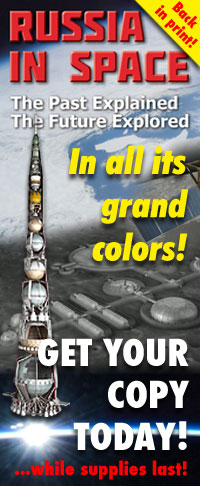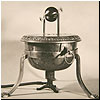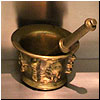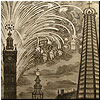|
|||||||||
Origins of space flight Space exploration rests on three foundations with equally ancient roots: astronomy, rocketry, and the insatious dream of flight.
|
 |
||||||||
| ASTRONOMY | |||||||||
Please help to keep this site open and current! The pace of our development depends primarily on the level of support from our readers. |
|||||||||
 |
Astronomy: a prequel to space flight Over many centuries, the idea of space travel has been taking shape with the humanity's improving understanding of the Universe. Before flying machines could attempt to escape the Earth's gravity, generations of astronomers had been building a realistic stage for space exploration, while their tools served as the earliest space research instruments. |
||||||||
 |
Visual history of astronomical tools At the dawn of the recorded history, the earliest human civilizations had already watched the positions of stars to track the calendar, to navigate on land and at sea, to foretell the future and to understand the Universe. Astronomers in ancient Greece are credited with designing some of the earliest tools for measuring and predicting the positions of celestial bodies. |
||||||||
| EARLY ROCKETRY | |||||||||
 |
Reactive principle The principle of reactive motion was first demonstrated in ancient Greece as early as 360 BC. The Noctes Atticae (Attic Nights) by Aulus Gellius described a hollow model of a pigeon moving on a string with the help of water steam. In the first century AD, Heron of Alexandria is attributed the invention of a steam-powered reactive machine. |
||||||||
 |
Like the wheel or the bow and arrows, the first rockets originated too deep in history to mark their exact birth date or to name their creators. Indisputable is the invention of gun powder in China which paved the way to firearms and to the first known solid-propellant rockets, likely in the early 13th century. |
||||||||
 |
Reaching Europe It is believed that around the 13th Century, knowledge of rocketry reached Italy and France. In the following centuries, fireworks rockets became popular throughout Europe, including England, Germany, Ukraine and Russia. |
||||||||
 |
In India, Mysorean princes began using battlefield rockets made of metal in the late 18th century, particularly in the battle of Serigapatam against the British in 1799. Their devastating effect inspired a British artillery officer William Congreve to organize the mass production of rockets. |
||||||||
 |
The golden age of rocketry Following Congreve, William Hale and Edmund Boxer further refined the rocket's design, turning it into a formidable weapon. During the 19th century, battlefield rockets appeared in several European armies and navies and also spread to the Americas. |
||||||||
 |
France adopts, upgrades Congreve rockets For nearly six decades in the 19th century, the French military developed and operated solid-propellant missiles based on the designs of the British rocket pioneer William Congreve. |
||||||||
Russian rocketry before the 20th century Before Korolev, before Tsiolkovskiy, Russian artillery engineers fascinated with missiles tried hard to tame rocket power. It took centuries to perfect these ancient machines. |
|||||||||
| SCIENCE FICTION (under construction) | |||||||||
 |
Dreaming of flight among the stars Over the centuries, numerous writers recorded tales of imaginary voyages to the Moon and other planets. These fantastic stories were slowly shaping into increasingly realistic visions of space travel, thanks to better understanding the cosmos and the emergence of new technologies. |
||||||||